Mountains trapped in the morning fog, jade-green water splashing on rocks near the photographic China Cove area, harbor seals and their pups floating in those playful waves, and birds everywhere, as far as the eye can see… You can find all of these along the short Bird Island Trail, a must-do hike in Point Lobos State Natural Reserve, Northern California.
Last updated: September 27, 2025

A Complete Guide to Hiking the Bird Island Trail in Point Lobos State Natural Reserve
Despite its name, I didn’t expect to see any birds while hiking the Bird Island Trail, the first proper hike we did on a foggy morning in Big Sur. Names can be rhetoric. Birds might have been linked to the trail, but I wasn’t thinking about them at that point. Instead I long to feast my eyes on the photogenic China Cove area tucked right below the Bird Island Trail.
To my amusement, the feathered wild creatures abounded. Intriguing hikers from a distance (more like thousand tiny dots on a far island), they captivated every visitor with their full sizes toward the middle of the Bird Island hike. Soon the trail looped, taking the onlookers back to where they came from.
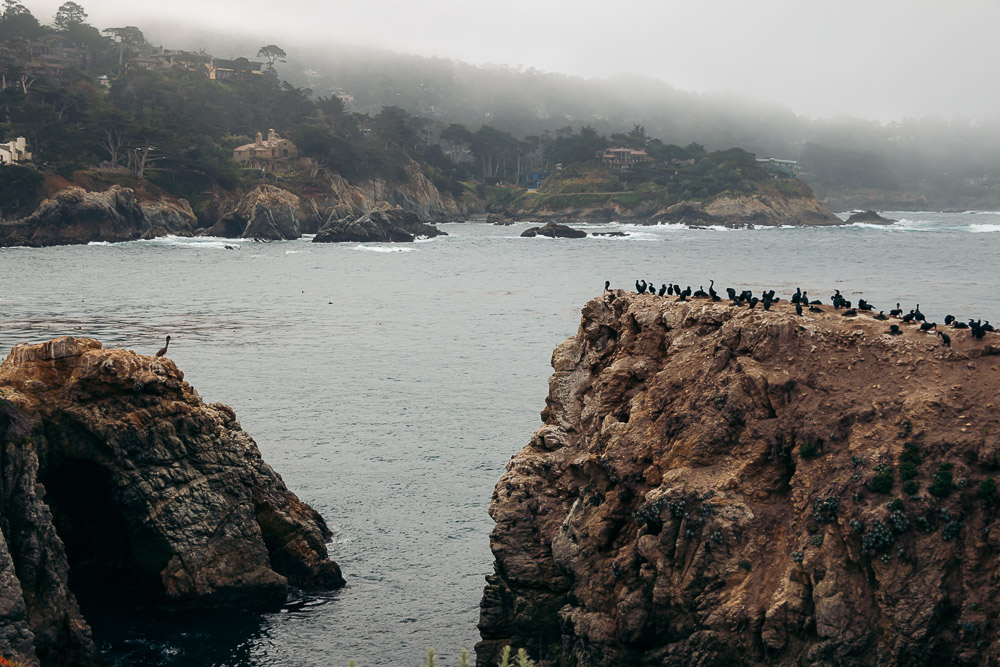
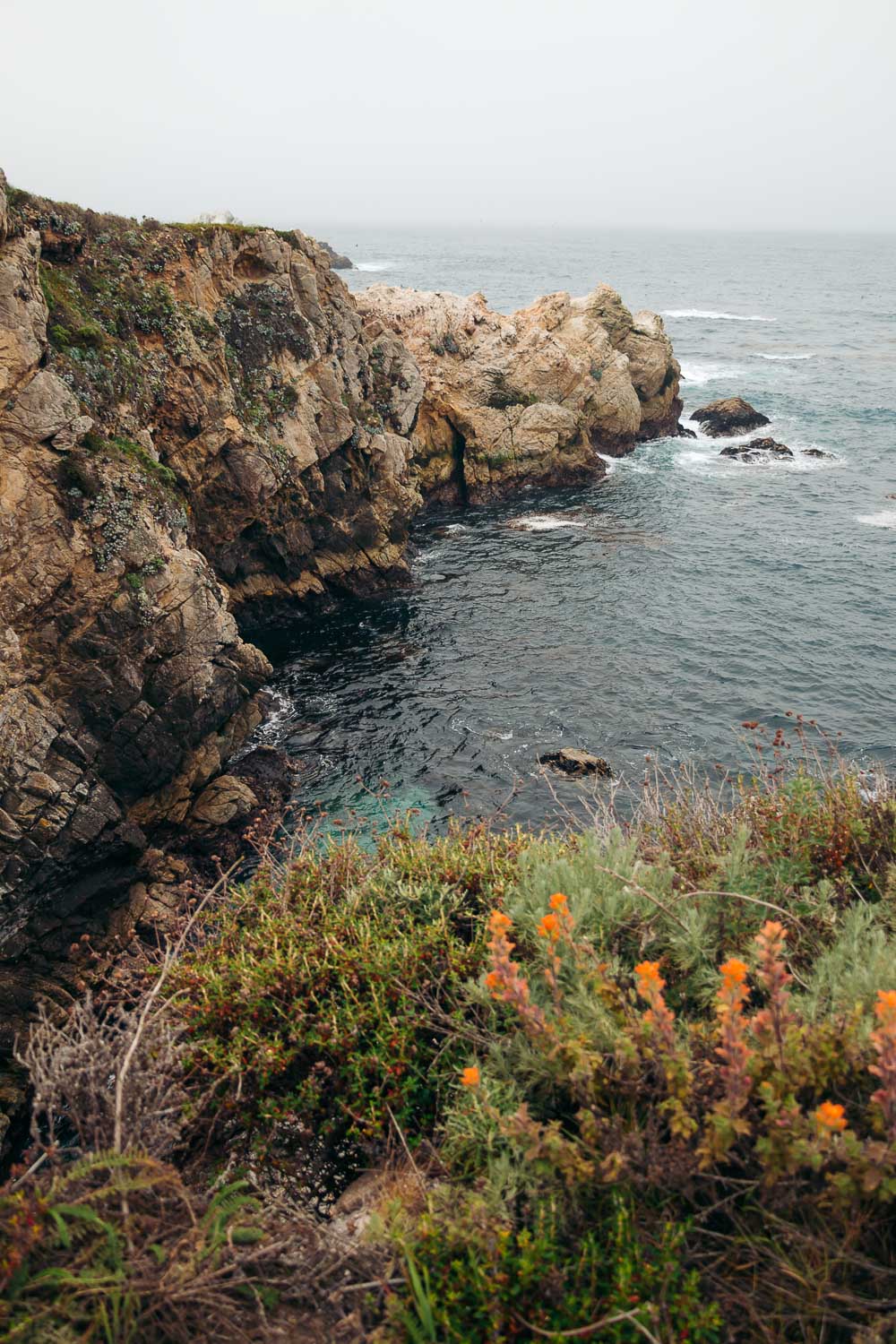
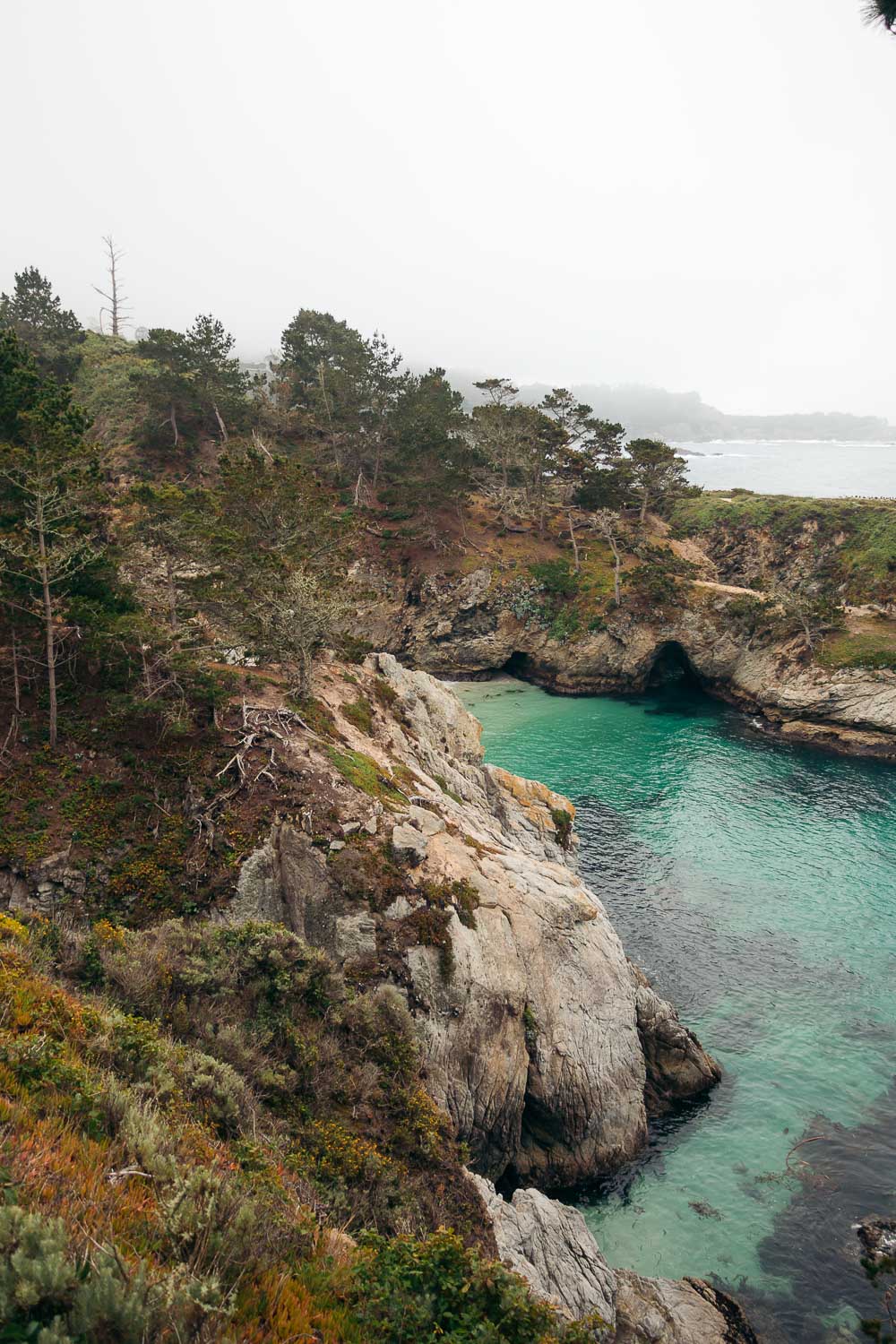
HOW TO HIKE AND PHOTOGRAPH THE BIRD ISLAND TRAIL AND CHINA COVE
Bird Island Trail Facts
- Distance: 0.52-mile loop
- Elevation Gain: 37 feet
- Difficulty: Easy
- Time: 20-30 minutes
Hike the Bird Island Trail to China Cove
Two small parking lots sit separated by a paved road at the Bird Island trailhead. In the early morning, each of them still boasts a few empty spots. A tidy trail with orderly arranged concrete stair steps lies to the right of the parking area. The trail sign indicates that you are about to embark on a hike along the scenic Bird Island Trail.
If you arrive around 8:00 a.m., soon after the Point Lobos State Natural Reserve opens, you can be amazed by the amount of different cameras and lenses that morning hikers carry along. The Bird Island Trail along with its spectacular China Cove are some of the prime destinations in Big Sur for photographers.
Nothing, except for the massive waves crashing on the tiny rocks-islands in the distance, reveals this yet. As you start heading in the opposite direction of the ocean, the vistas slowly change. But instead of the birds, harbor seals and their still awkward pups stop the hikers in their tracks. The hike along the Bird Island Trail has just started and you’re already rewarded with such a magnificent view.
These marine creatures certainly have good taste. Seeking protection from the elements, they have chosen a white-sandy cove with the jade-green water to stay at during the pupping season. The picturesque China Cove area might allure the Bird Island’s hikers with its outstanding vistas. For the harbor seals, it’s a temporary safe haven.

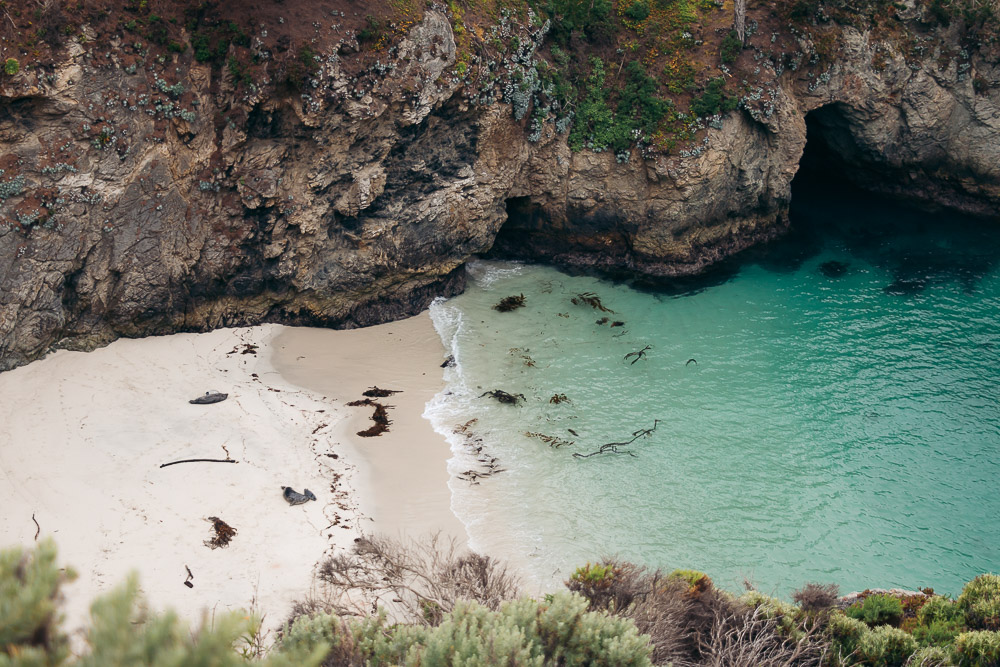
How to Photograph China Cove
Above the cove, on the trail with railings and a few benches, all those cameras and photo gears are finally put to use. The entire section of the trail provides different vantage points.
These may look just slightly different for an untrained eye. For professional wildlife and landscape photographers, the views are distinct, signifying the unprecedented beauty of the Bird Island Trail.
TIP: You don’t have to be a professional – I’m certainly not one of them – to get your unique perspectives. Hike up and down the Bird Island Trail above China Cove and train your eyes. Once you stumble upon a spot that takes your breath away, point your camera or phone and shoot.
If you have a telephoto lens, make use of it now. But even without expensive equipment, you can still take incredible pictures that make the Bird Island Trail worth an early visit.
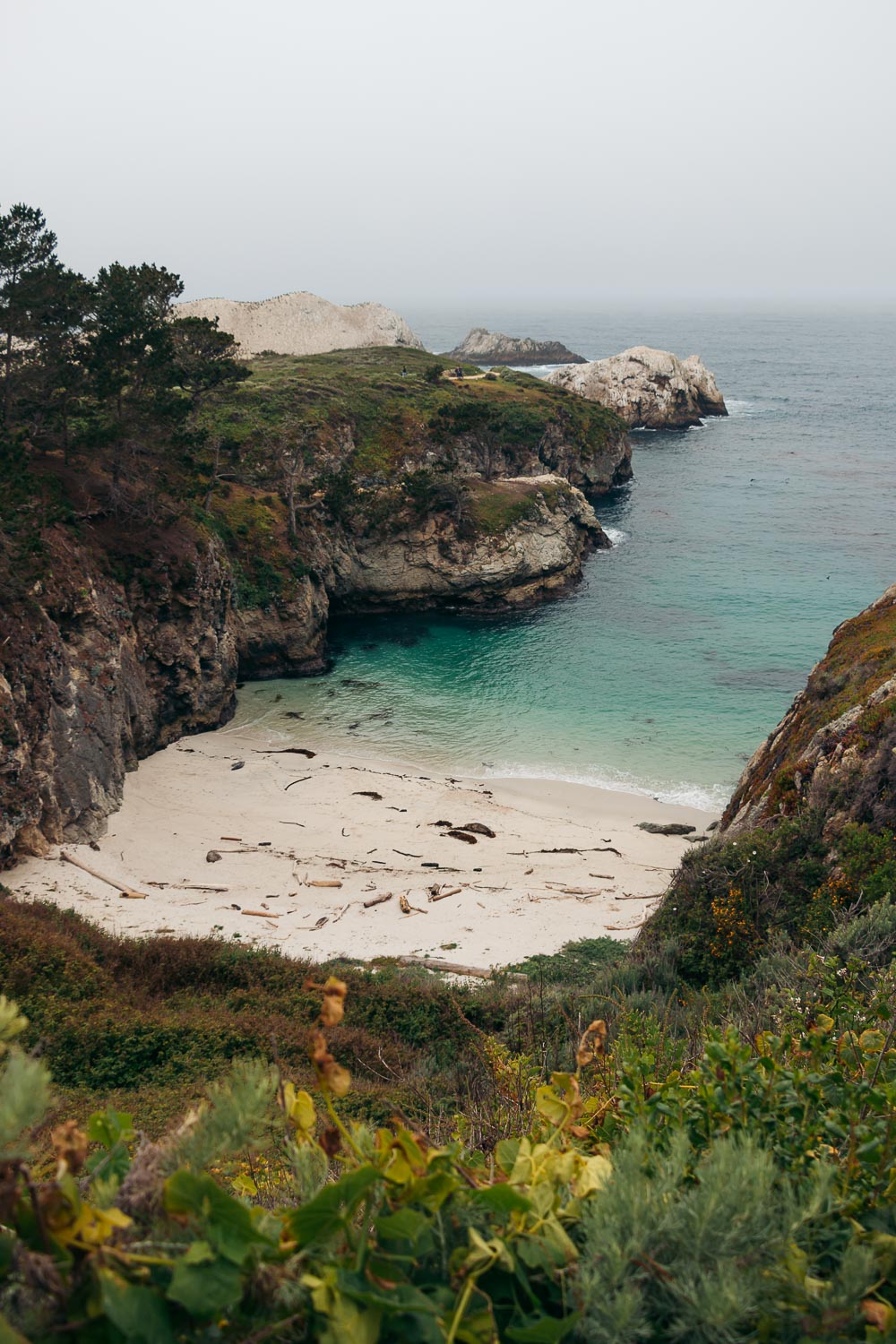
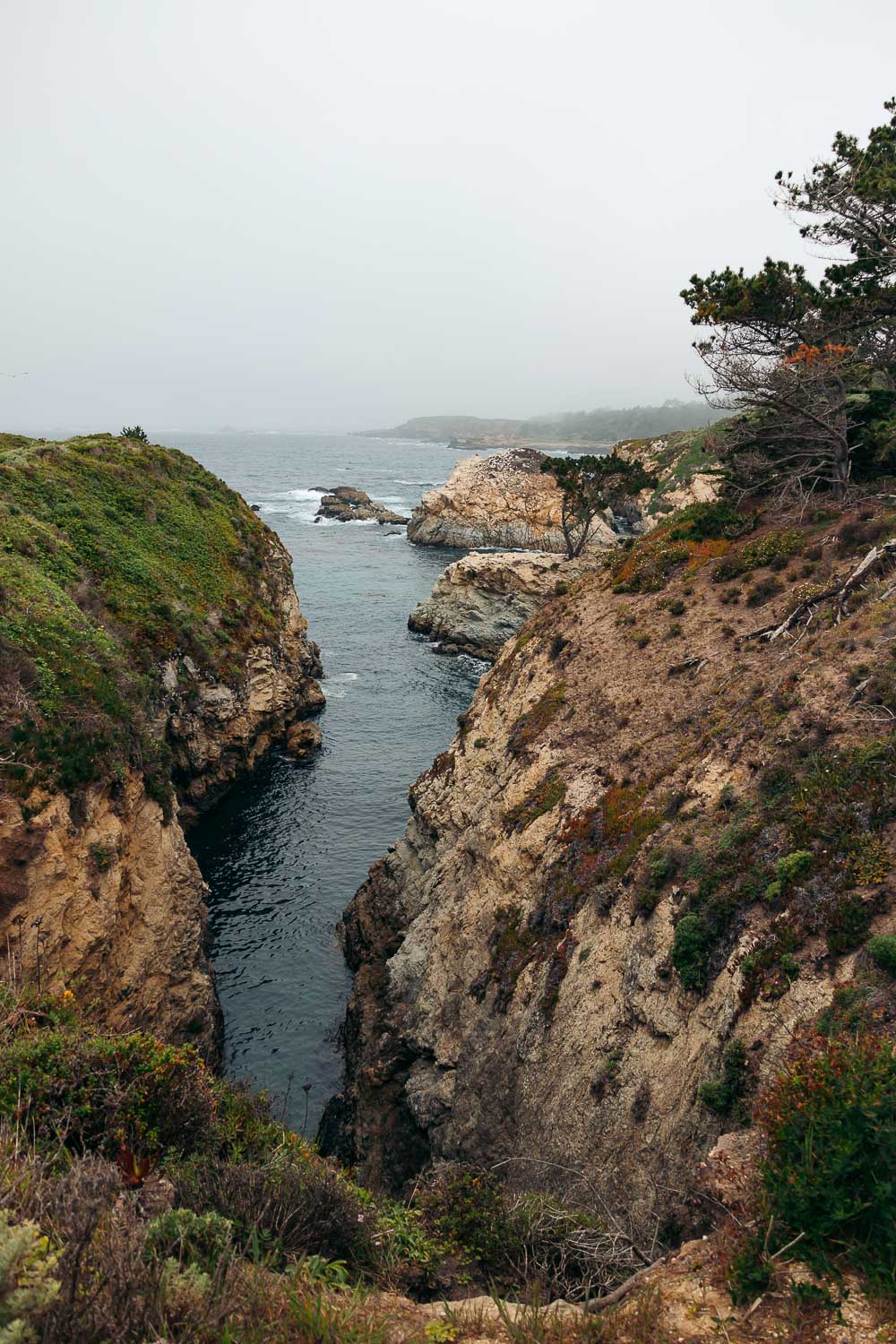
Hike from China Cove to “Bird Island”
The Bird Island Trail is easy to hike. The neat path winds along the cliff, offering plenty of different views. Once you leave the section of the trail above China Cove, look out for Gibson Beach to your left. Take the left fork at a trail junction and get down to the beach.
Alternatively, you can continue hiking the Bird Island Trail and photographing the sandy stretch with towering houses above it from here. Don’t forget to also look higher up and capture the trees – lost in the fog now – that guard Gibson Beach from afar.
At this point, the Bird Island Trail approaches its most-coveted section. Another turn around a big boulder, and a “sea” of birds comes into view. The feathered creatures of different sizes nestle on the “islands”. There is no room for privacy. Only a close community. Some birds stay still while others try to catch the crawling or flying “food” on the rocks.
These views are overwhelming. Chances are you’ve never seen so many birds at once. If you’ve ever wondered why the path was called the Bird Island Trail, the answer is right in front of you.
A wooden observation deck allows the hikers to get closer to one of the bird islands. Many photographers may have already occupied the best vantage points here, pointing their massive telephoto lenses at the birds.
Photography Tip: If you linger long enough, you may seize a chance to get as close to the feathered friends as all those hikers with their professional cameras. Otherwise, hike along this section of the Bird Island Trail and look for yet unclaimed areas to photograph the birds from.

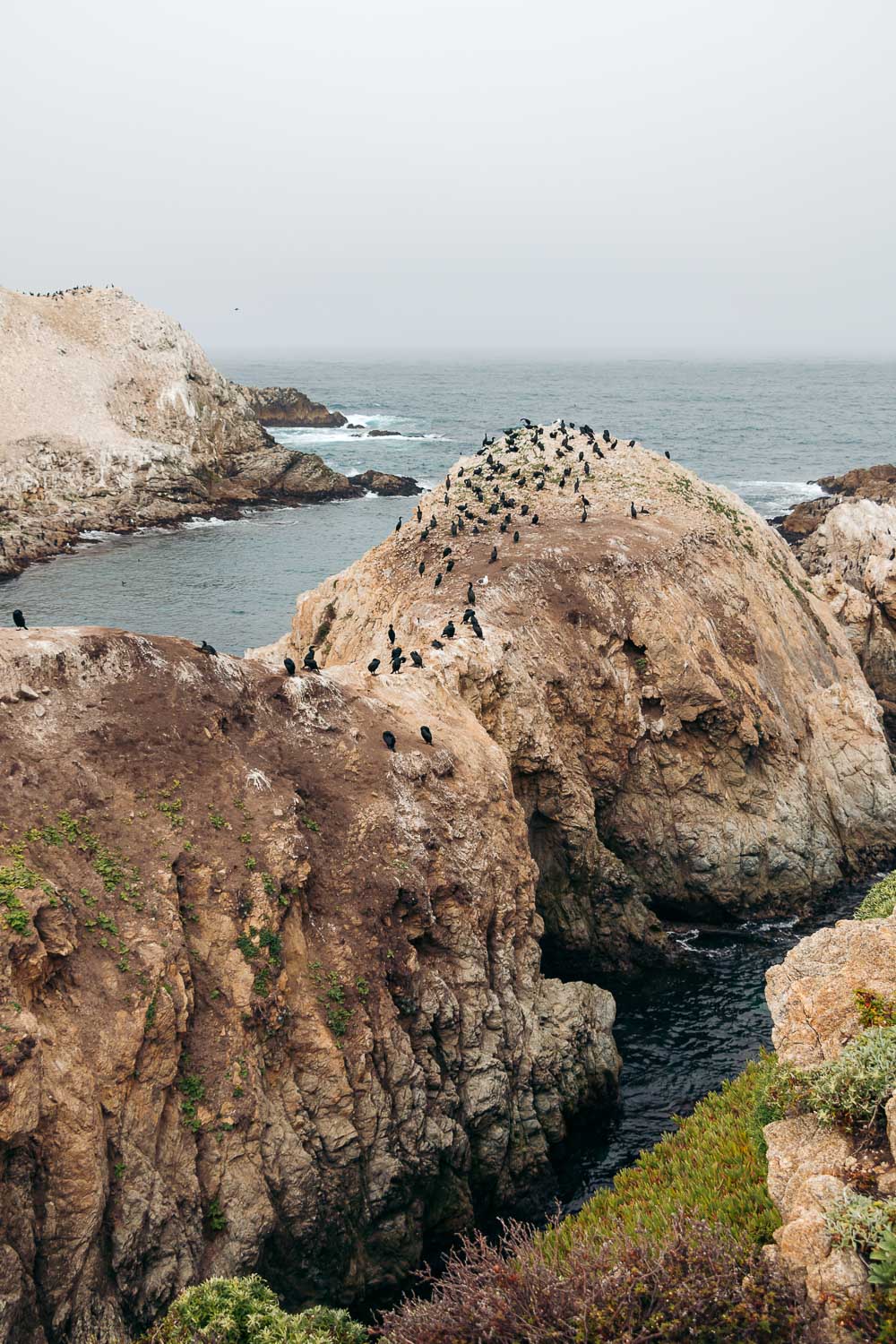
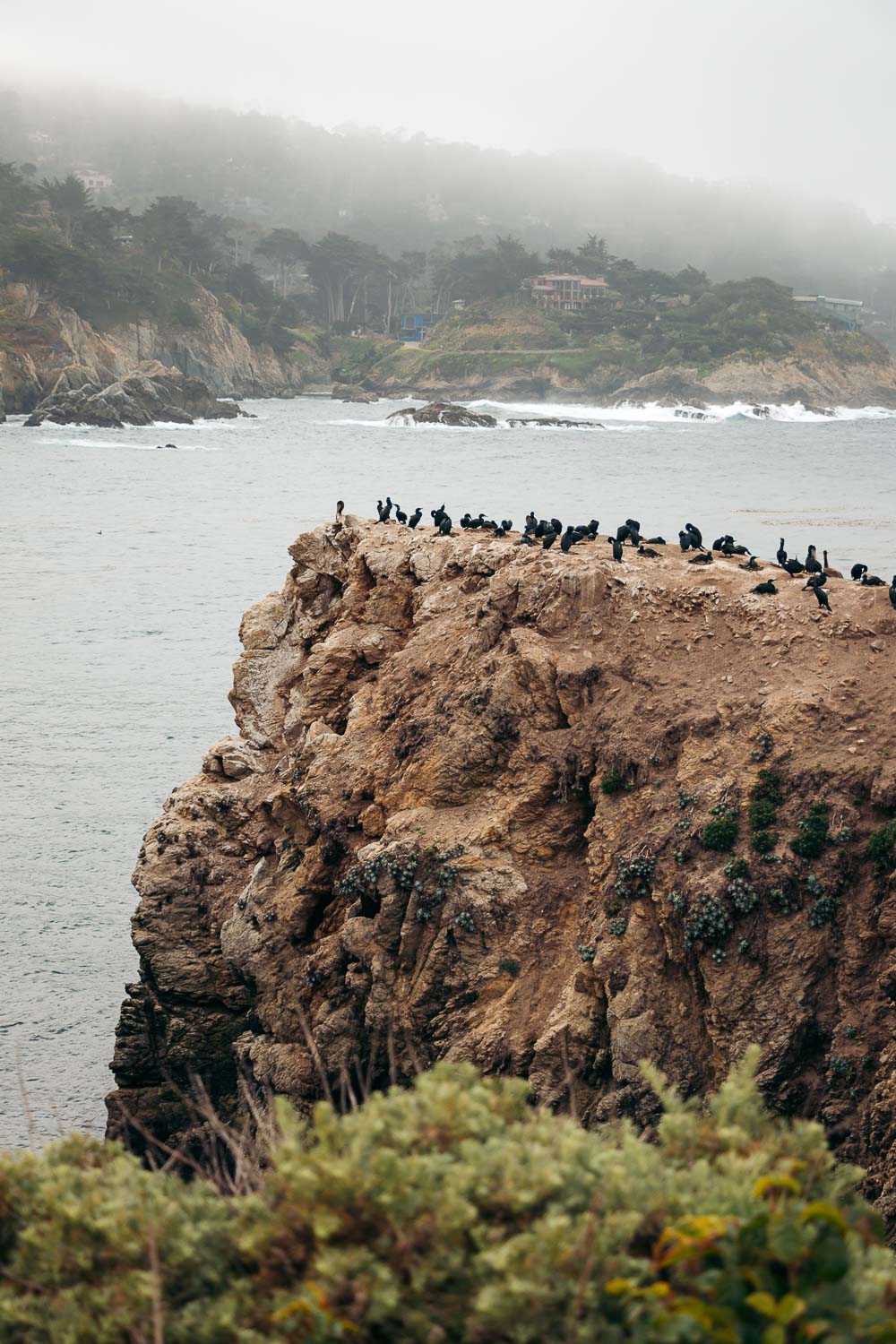
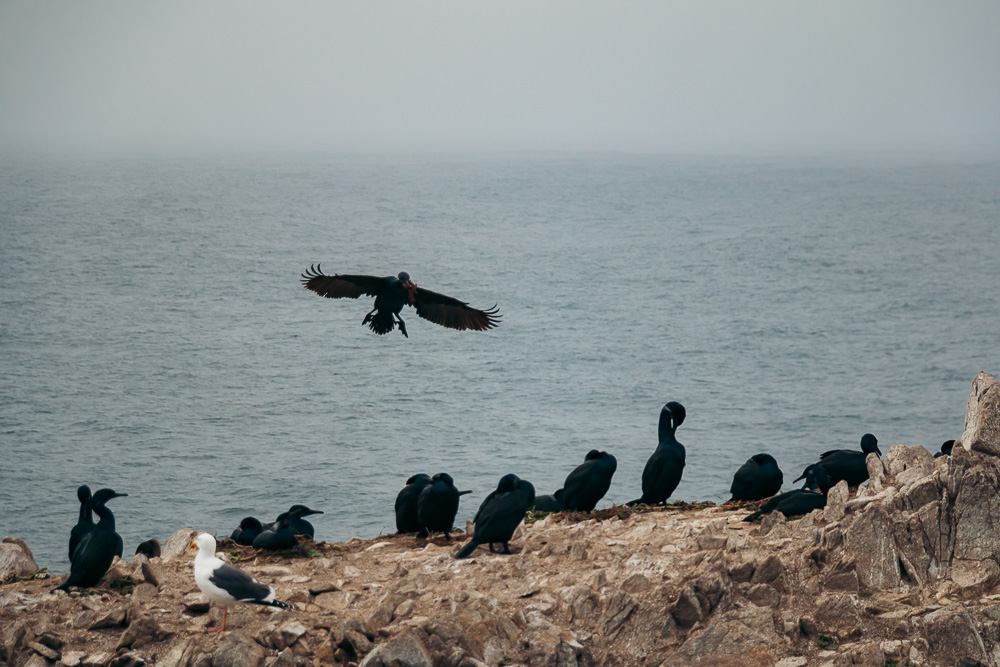
Back to the Bird Island Trailhead
The Bird Island Trail loops around the rock and comes back to the path you came from. Once again, you get a chance to admire China Cove and photograph more of the clumsy harbor seals along the way.
If you hike the Bird Island Trail in early or mid-spring, wildflowers align the path, prompting you to capture this seasonal splendor of Big Sur as well. At the very end of the Bird Island Trail, the same stair steps assist you down. The parking lot is a stone’s throw away from here.
READ MORE: How to Get to Calla Lily Valley in Big Sur, California
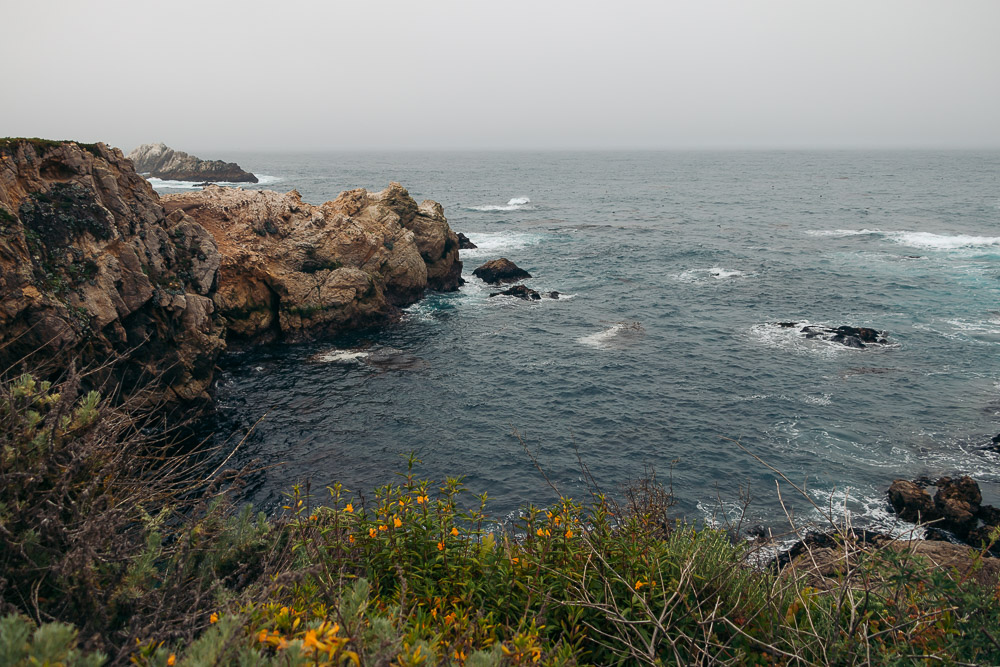

Things to Know before Hiking the Bird Island Trail and Photographing China Cove
Entrance
The Point Lobos State Natural Reserve charges a fee for a chance to hike and photograph the Bird Island Trail and China Cove. The entrance fee is $10 per vehicle. You can use the same ticket to enter other California state parks in Big Sur during the same day.
READ MORE: How to Visit McWay Falls: Iconic Spot in Big Sur
Hours
The Point Lobos State Natural Reserve is a day-use area. The area is open daily from 8:00 a.m until 7:00 p.m. Make sure you enter the reserve before 6:30 p.m. Otherwise you may need to postpone your hike along the Bird Island Trail for at least a day.
Arrive Early
We arrived at the Point Lobos State Natural Reserve around 8:00 a.m. on a Saturday. The park was already entertaining enough nature lovers to fill more than half of the parking spaces at the parking lots we drove past.
By the time we reached the Bird Island trailhead, only a few parking spaces at the Bird Island parking lot remained empty. When we finally got back to the trailhead after the hike, the just arrived vehicles already lined up, waiting for a spot to open up.
The magnitude of the Point Lobos State Natural Reserve’s popularity surprised us even more when we left the area a few minutes later. No cars were allowed to enter the park any longer. There were no empty parking spots left. Visitors had to park outside the reserve along Highway 1 and access the area on foot.
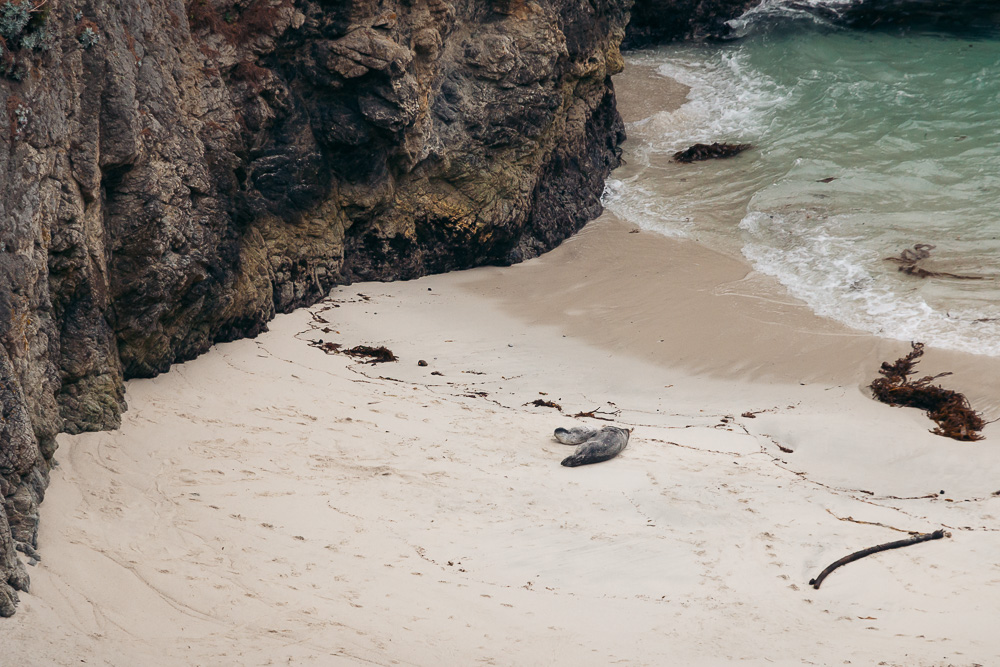
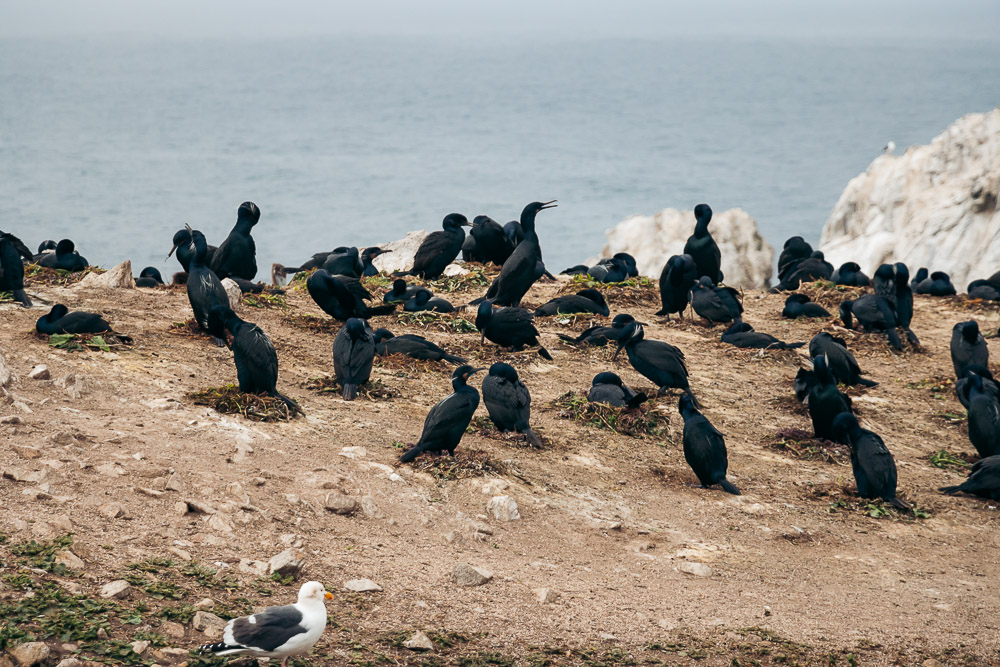
Location
The Bird Island Trail with the China Cove area below it is located at the southernmost corner of the Point Lobos State Natural Reserve. The road ends here, prompting all drivers to turn back and either linger around or look for empty spaces at the parking lots nearby.
Don’t Rush while Photographing Wildlife at China Cove and along the Bird Island Trail
Your patience will pay off eventually. Marine animals and birds are unpredictable. If you stay long enough, you may capture a bird that is about to soar into the sky. Seals can surprise you with their unintentional candid poses and playful moods.
Bring along Telephoto Lens
It’s optional. But any lenses help tremendously if you strive to get those zoomed-in images of wildlife that thrives along the Bird Island Trail and near China Cove.
No Feeding Wildlife while Hiking the Bird Island Trail
This disturbs the natural feeding patterns of wild animals. Moreover, feeding wildlife can “award” you a fine.
No Drones
While you can use any cameras and gear to photograph wildlife along the Bird Island Trail and China Cove, no drones are allowed in the state park.
A Hike along the Bird Island Trail and China Cove: Photo Gallery

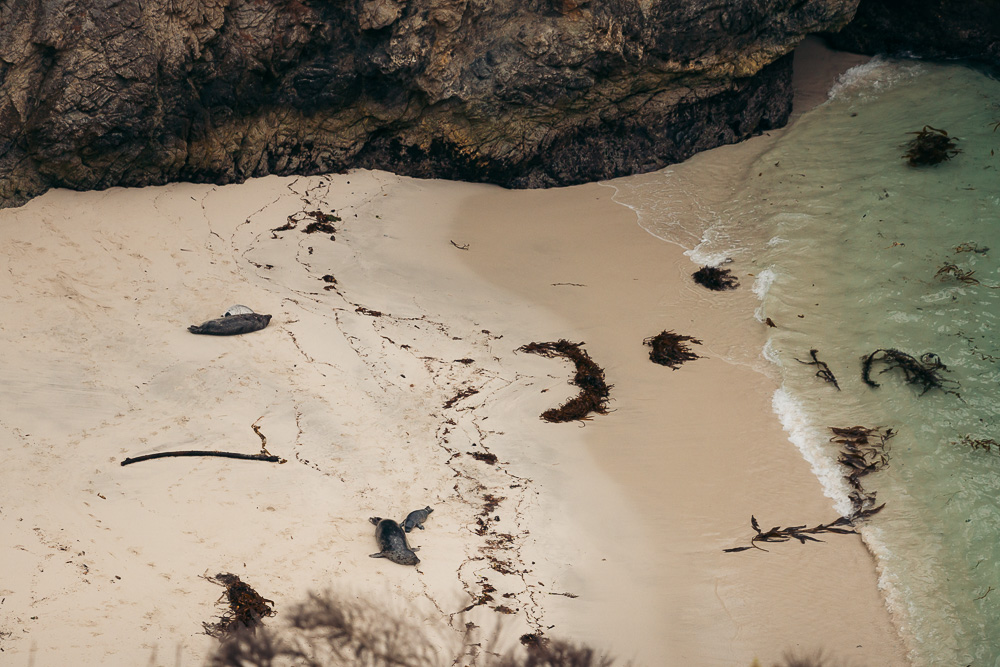
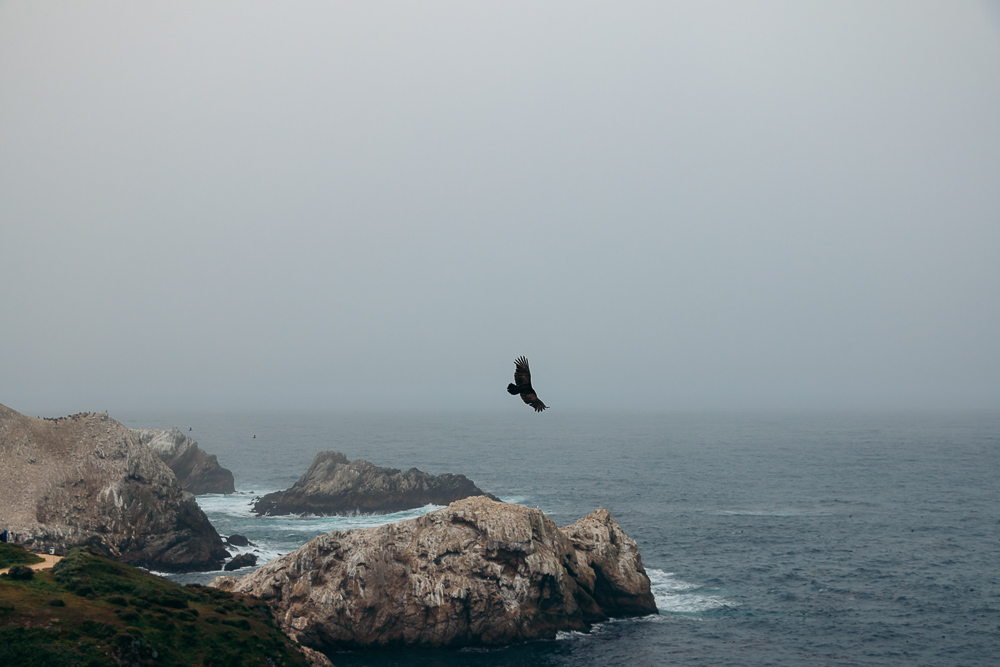
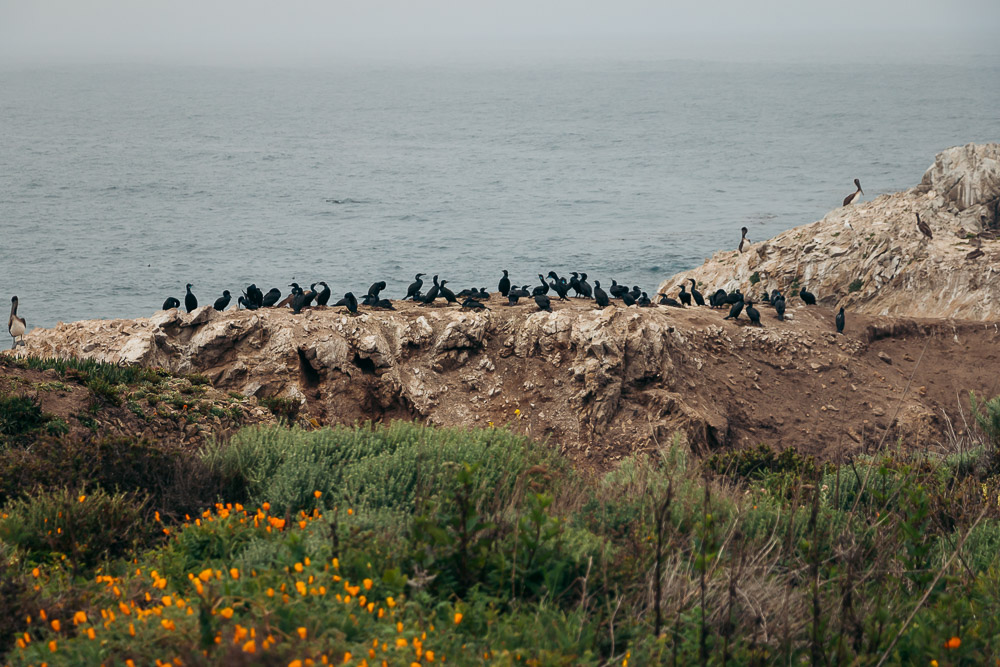
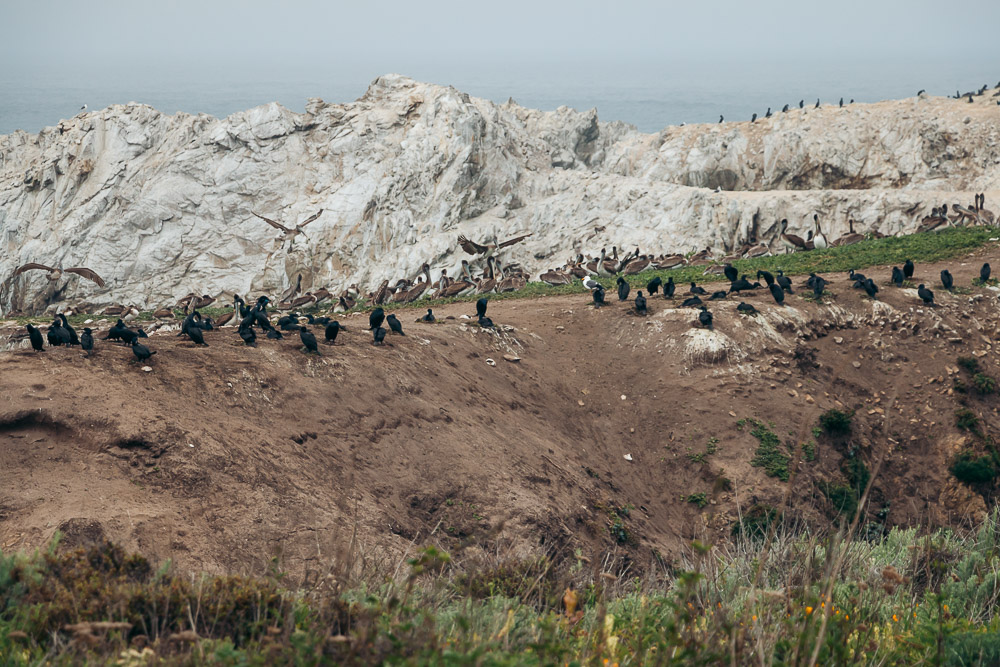
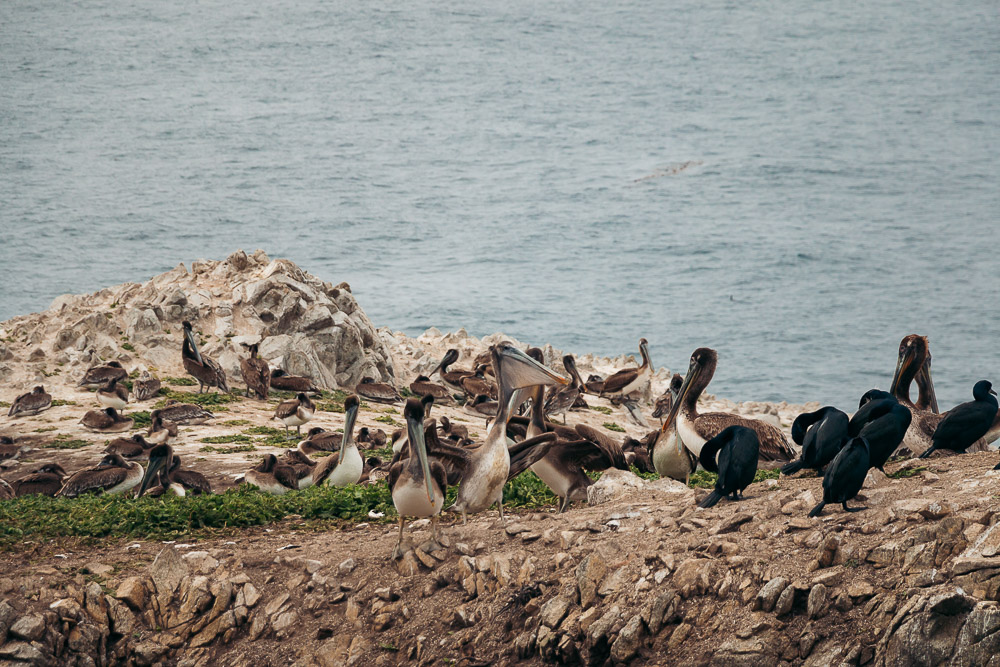
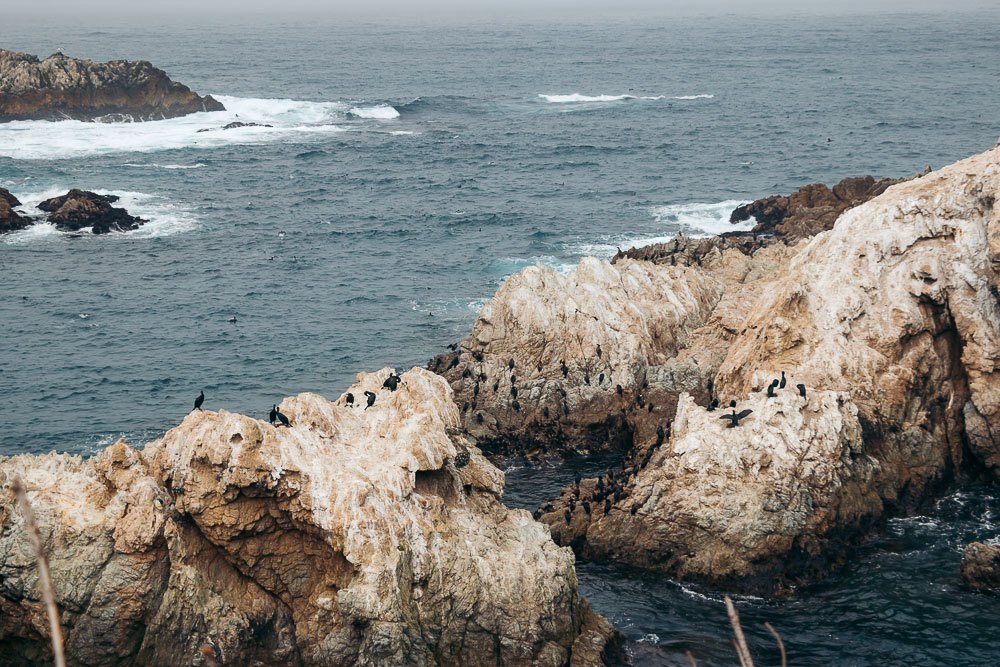
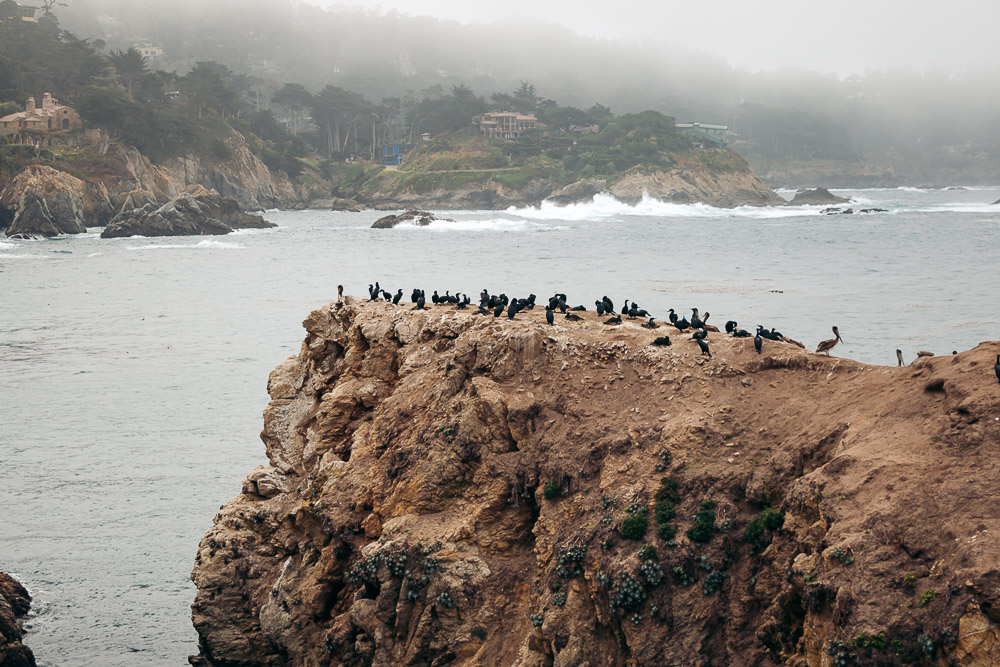
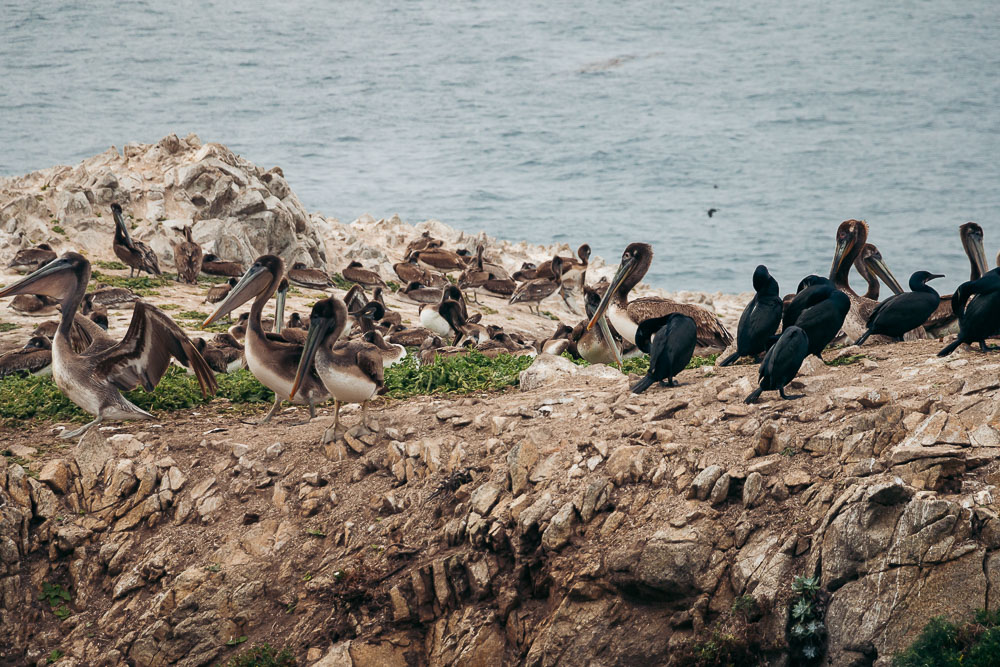
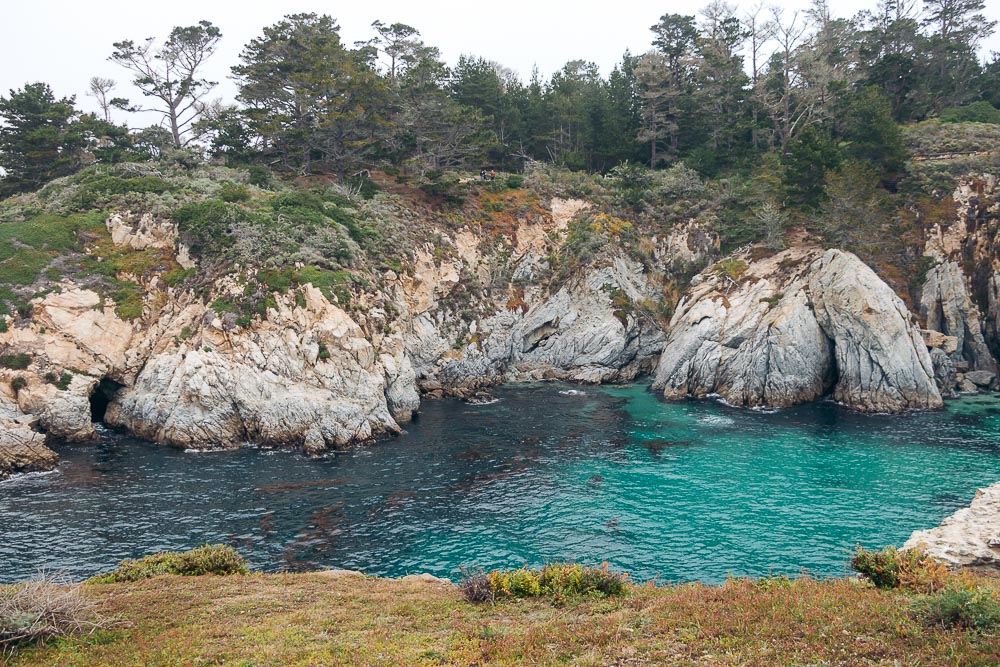
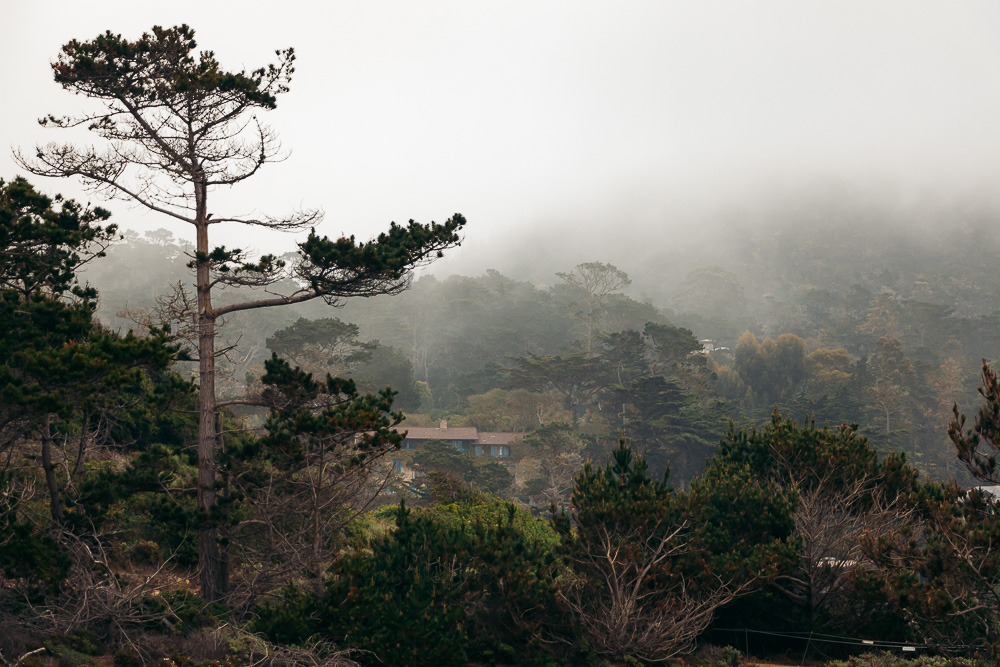
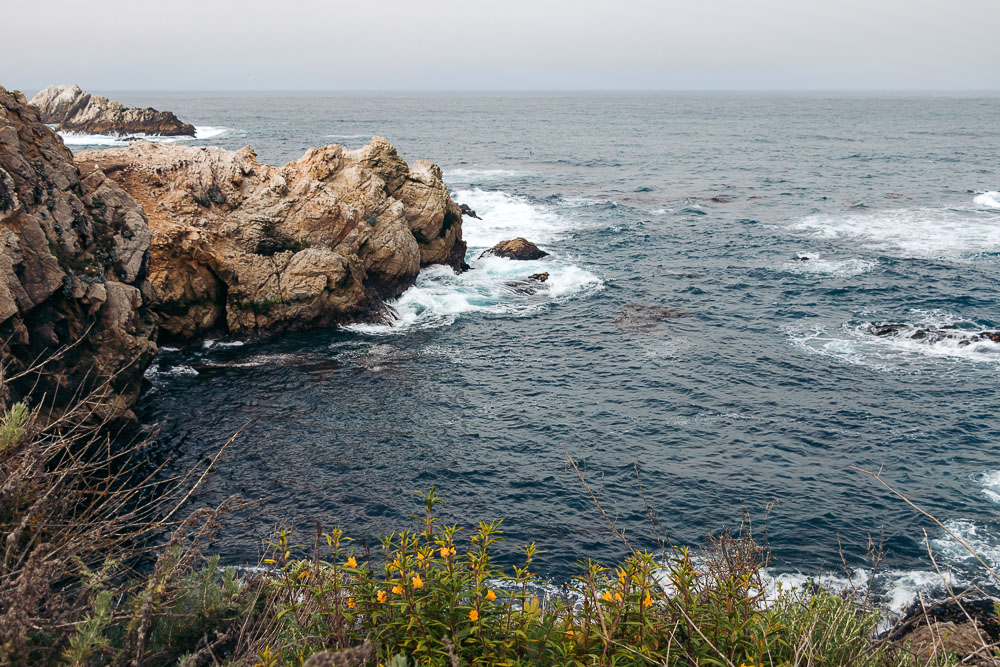
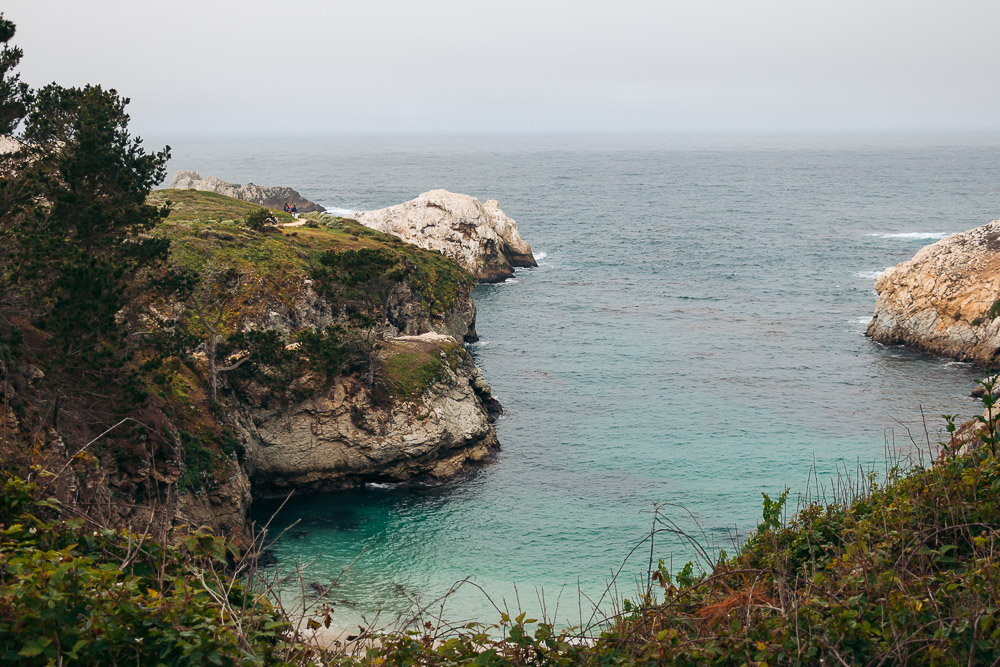
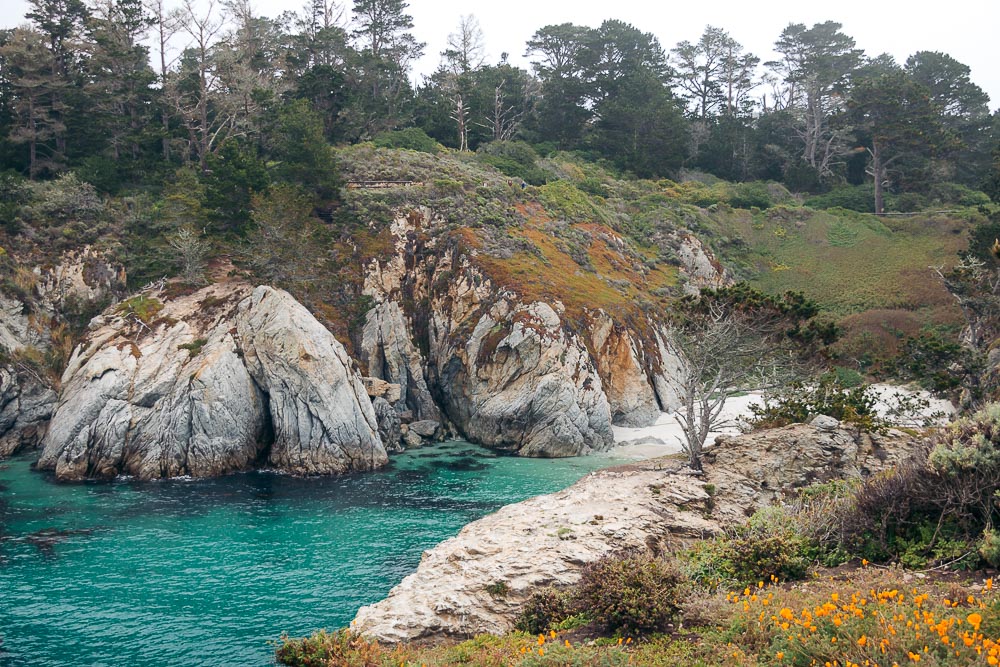
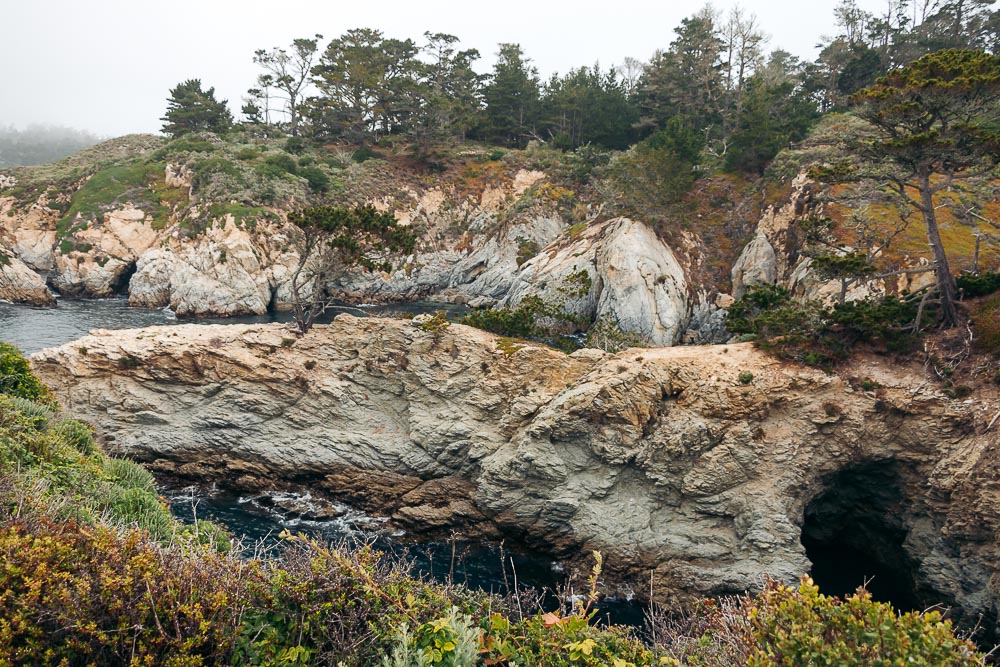
Read Next
- BIG SUR IN PHOTOS: Big Sur Photo Tour
- SAN SIMEON TRAVEL: 11 Reasons to Visit San Simeon: The Best Things to Do
- CALIFORNIA ROAD TRIPS: 3 Best California Road Trips
- PINNACLES NP: Bear Gulch Cave: Talus Cave Hike in Pinnacles National Park
- GARRAPATA PARK: How to Hike Soberanes Point-Whale Peak Trail in Garrapata Park